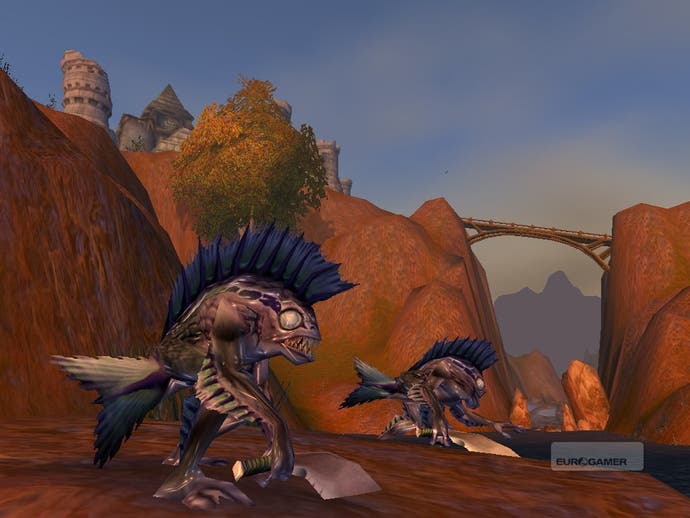The Making of World of Warcraft
Part One: From concept to launch.
Eleven million players. Two expansions. $1.2 billion a year in revenue. 16GB of your hard disk. Billions of hours played. Acres of news-print. A Sam Raimi-directed movie in the works. A billion-dollar grey market in gold and items. An episode of South Park. Therapists creating in-game characters for addiction counselling. Eleven million players.
The sheer magnitude of World of Warcraft is staggering. There's nothing else like it in videogaming, a fact which makes perfect sense to its players - but is frankly baffling to non-players, and those who don't understand the appeal of the online worlds presented by massively multiplayer online role-playing games (MMORPGs, or simply MMOs). Perhaps because WOW is so huge, so impossible to ignore, it polarises opinions.
Yet all of this can sometimes serve to obscure the most important thing about World of Warcraft. Strip away the hype, the numbers, the media coverage and the debate, and what you're left with is simply a superb game. A game crafted with skill, love and obsessive perfectionism by an exceptionally talented team at the company that built it, Blizzard Entertainment.
If we want to talk about that game - rather than the baggage it has accumulated over the years - it makes sense to go all the way back to the beginning.
World of Warcraft first popped into public view in September, 2001. Blizzard executive Bill Roper had flown into London to make an announcement at the ECTS trade show. Anticipation was high. The already legendary studio had revealed its (as yet unreleased) strategy game Warcraft III at ECTS two years previously, and the announcement of a new Blizzard game was a big deal. Even then, the studio was known for doing few games, very slowly - and very, very well. The smart money was on a sequel to its other strategy hit, StarCraft.

It wasn't StarCraft II. That afternoon, Roper announced a whole new direction for Blizzard - the company was going to make a massively multiplayer game, letting people roam the Warcraft world as their own characters. Three playable races - humans, orcs and the bull-like tauren - were revealed, and each was going to be fundamentally different. You would be able to play from first-person, third-person or zoomed-out, isometric perspectives.
The reaction was mixed. There was excitement and intrigue, certainly, but there was also a sense of confusion - even disappointment. Why would Blizzard, a strategy-gaming giant, be choosing to muck around with this niche genre? Didn't they know how few people played MMOs? Did they understand what they were getting themselves into?
"It felt like a natural progression," recalls Blizzard's grandly-titled vice president of creative development, Chris Metzen, casting his mind back almost a decade. "We had been working on Warcraft III or different iterations of it for a couple of years at the point when we really started to think about World of Warcraft, and a lot of the creative vision really translated from the Warcraft III experience."

Sam ("Samwise") Didier, the company's art director, interjects. "I'm not sure if this is exactly where it started - but at one time, we had a behind-the-character camera in Warcraft III, much like you see in WOW now. We were thinking of a slightly different, RTS-slash-RPG vibe for the game.
"We ended up going back more to the RTS side, but I remember seeing those first builds of the game: you're running around with the Archmage or the Blademaster, right behind him. You see the horizon, and the enemy camps in front... I think that helped to establish the feeling that, wow, our game would look awesome like this."
It wasn't just this natural progression, however, that inspired World of Warcraft. It helped that the team was spending a lot of time playing certain other games.
"It's funny," admits Metzen, "at the time a lot of us were playing [early MMOs] EverQuest and Ultima Online... Well, we had a secondary development team working on an unannounced project, which we thought was cool, although it was still taking shape - but given that we were such fans of games like EverQuest, the discussion at the time was, well, maybe we can do one of these!"








